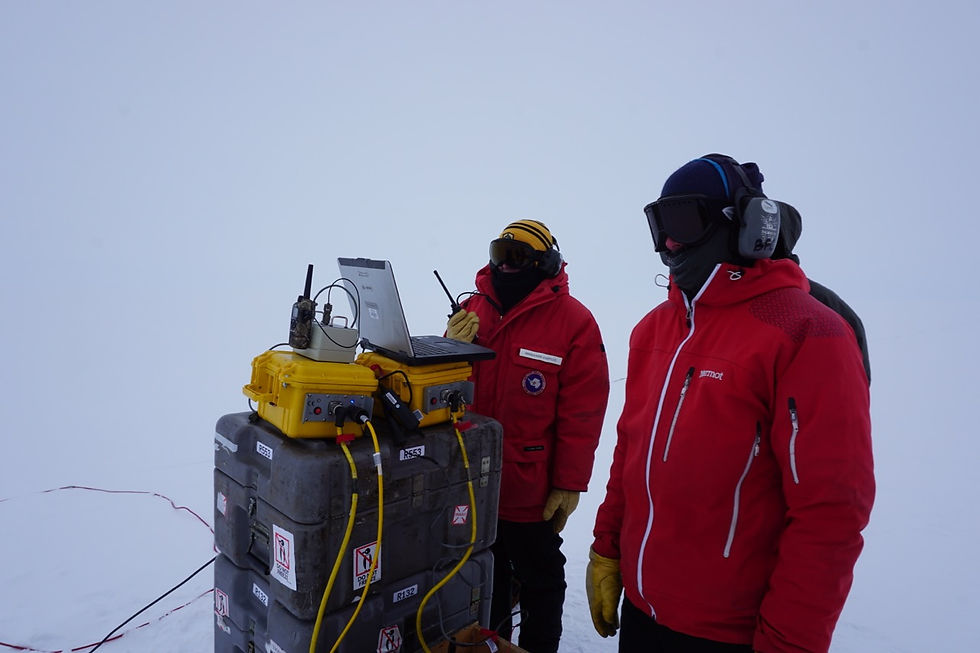Testing seismic sources
- studyearth
- Jan 14, 2019
- 1 min read
Updated: Jan 30, 2019
From Jan. 11-14, we tested a few configurations of small, surface shots and small, drilled and loaded shots. One of the configurations was a small amount of explosives on a pole to thump the ground and generate a seismic wave.
When possible, we also kept a person or two at the computer showing the Geode data to make sure the Geode turned on to record at the right times. Typically, the Geode turned on in response to a radio trigger, but when our shots were too far away, we switched to triggering on time every minute. Andrew and Catie helped us out a lot on Jan. 11th.
In additional to providing valuable information for our seismic imaging field work in two years time, the recordings of these sources will also allow us to investigate the structure and characteristics of the ice near WAIS Divide. We should be able to see properties of the firn, the snow layer on top of the ice, the ice itself, the ice-rock basal interface, and the rock (geology) beneath the ice. These information should help us better understand the properties and behavior of the West Antarctic Ice Sheet through time.





On Jan. 14, we returned to camp to be greeted with beef or mushroom stroganoff and cardamom rice pudding - yum!





Comments